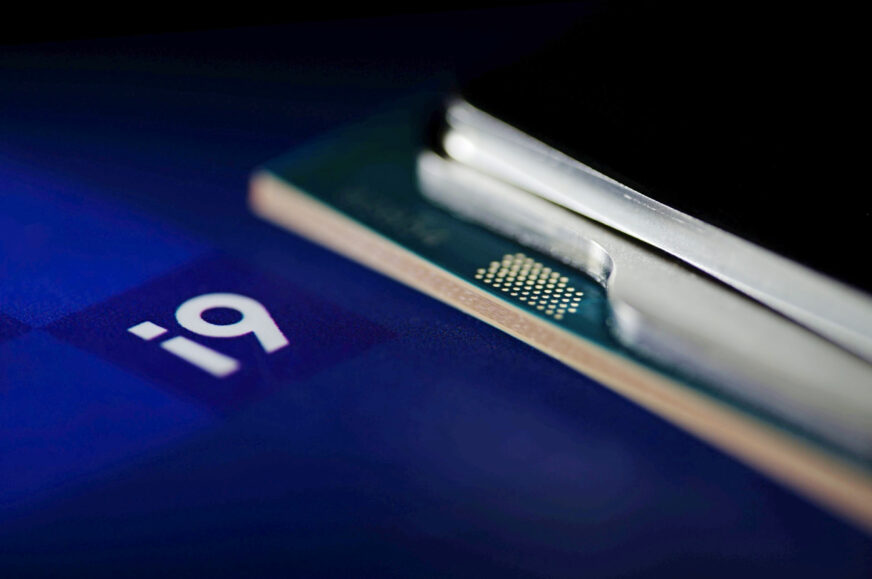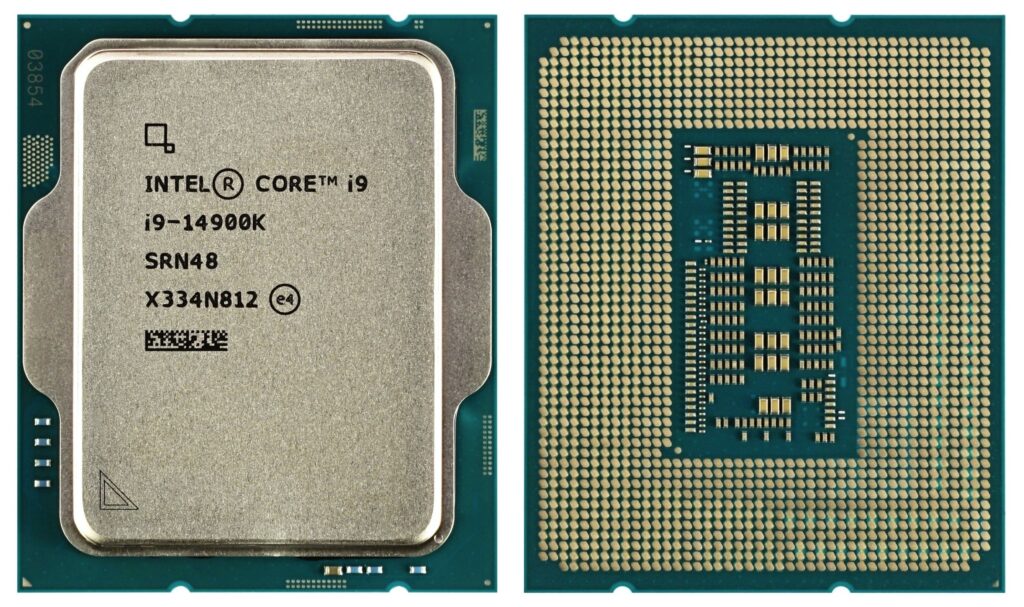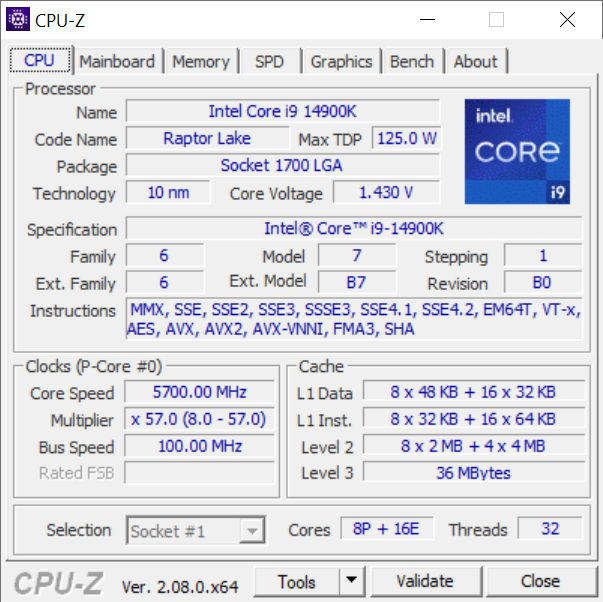Intel Core i9-14900K in detail
The top model of the 14th generation of Intel Core (Raptor Lake Refresh-S) processors has outperformed everything that has come out for desktop computers so far. In speed, but also in power draw. On the one hand, the 6 GHz metric for single-threaded applications has been reached and the clock speeds are very high even under all-core boost, the side effect is that the Core i9-14900K’s power draw can sometimes spike up to 400 W.
Intel Core i9-14900K in detail
The chip and its configuration are unchanged from the Core i9-13900K. The Core i9-14900K is still built physically on a 24 core B0 stepping. Eight “performance”/P cores with HyperThreading support (two threads per core) complement the sixteen “efficient”/E cores. So this is a 32-thread processor, as is the competing Ryzen 9 7950X. It has already been faced by the older Raptor Lake (13900K) and the Core i9-14900K naturally has higher ambitions. They are to be met mainly thanks to higher boost clock speeds.
As for the all-core boost (multi-threaded applications, games), it has increased by 200 MHz (to 5.7 GHz) between generations, similar to the boost for single-threaded applications. The latter has climbed up to 6 GHz. In the previous generation, for example, Asus tried to reach them using “AI Overclocking” techniques, but now it’s an integral part that works on all motherboards. There is also some increase in speed (by 100 MHz, to 4.4 GHz) on the E cores.
The PL2 value for the Core i9-14900K stays at 253 W (as with the Core i9-13900K or the Core i7-14700K), but without power limits, record power draw can naturally be expected, as CPU core clock speeds across all types of workloads were increased with the same manufacturing node (Intel 7 Ultra). Analysis of Golden Raptor Cove (on which the P cores are based) and Gracemont (E cores) architectures, see our earlier articles (1, 2.
The Core i9-14900K will be one of the most powerful processors for the Intel LGA 1700 platform. Specifically the second most powerful at worst, if the Ci9-14900KS model actually comes out later. The new LGA 1851 platform is already in the pipeline for forthcoming processors (Intel Arrow Lake-S). The new platform will most likely only support DDR5 memory, while Raptor Lake Refresh is still compatible with the older and especially cheaper DDR4 standard. And the latter won’t be a bottleneck, as tests of the Core i9-12900K with 3600 MHz modules have shown.
Like all of the Raptor Lake Refresh processors, the Core i9-14900K includes exclusive Intel Application Optimization support (covering the entire 14th generation Intel Core) for select programs, including games. What it is and how this software extension works, we described in more detail in the prologue to the Core i5-14600K review.
| Manufacturer | Intel | Intel | AMD | |
| Line | Core i9 | Core i9 | Ryzen 9 | |
| SKU | 14900K | 13900K | 7950X | |
| Codename | Raptor Lake Refresh | Raptor Lake | Raphael | |
| CPU microarchitecture | Golden Cove (P) + Gracemont (E) | Golden Cove (P) + Gracemont (E) | Zen 4 | |
| Manufacturing node | 7 nm („Intel 7 Ultra“) | 7 nm („Intel 7 Ultra“) | 5 nm + 6 nm | |
| Socket | LGA 1700 | LGA 1700 | AM5 | |
| Launch date | 10/17/2023 | 10/10/ 2022 | 09/26/2022 | |
| Launch price | 589 USD | 589 USD | 699 USD | |
| Core count | 8+16 | 8+16 | 16 | |
| Thread count | 32 | 32 | 32 | |
| Base frequency | 3.2 GHz (P)/2.4 GHz (E) | 3.0 GHz (P)/2.2 GHz (E) | 4.5 GHz | |
| Max. Boost (1 core) | 6.0 GHz (P)/4.4 GHz (E) | 5.8 GHz (P)/4.3 GHz (E) | 5.7 GHz (unofficially 5.85 GHz) | |
| Max. boost (all-core) | 5.7 GHz (P)/4.4 GHz (E) | 5.5 GHz (P)/4.3 GHz (E) | N/A | |
| Typ boostu | TBM 3.0, TVB, ABT | TBM 3.0, TVB, ABT | PB 2.0 | |
| L1i cache | 32 kB/core (P), 64 kB/core (E) | 32 kB/core (P), 64 kB/core (E) | 32 kB/core | |
| L1d cache | 48 kB/core (P), 32 kB/core (E) | 48 kB/core (P), 32 kB/core (E) | 32 kB/core | |
| L2 cache | 2 MB/core (P), 4× 4 MB/4 cores (E) | 2 MB/core (P), 4× 4 MB/4 cores (E) | 1 MB/core | |
| L3 cache | 1× 36 MB | 1× 36 MB | 2× 32 MB | |
| TDP | 125 W | 125 W | 170 W | |
| Max. power draw during boost | 253 W (PL2) | 253 W (PL2) | 230 W (PPT) | |
| Overclocking support | Yes | Yes | Yes | |
| Memory (RAM) support | DDR5-5600/DDR4-3200 | DDR5-5600/DDR4-3200 | DDR5-5200 | |
| Memory channel count | 2× 64 bit | 2× 64 bit | 2× 64 bit | |
| RAM bandwidth | 89.6 GB/s/51.2 GB/s | 89.6 GB/s/51.2 GB/s | 83.2 GB/s | |
| ECC RAM support | Yes (with vPro/W680) | Yes (with vPro/W680) | Yes (depends on motherboard support) | |
| PCI Express support | 5.0/4.0 | 5.0/4.0 | 5.0 | |
| PCI Express lanes | ×16 (5.0) + ×4 (4.0) | ×16 (5.0) + ×4 (4.0) | ×16 + ×4 + ×4 | |
| Chipset downlink | DMI 4.0 ×8 | DMI 4.0 ×8 | PCIe 4.0 ×4 | |
| Chipset downlink bandwidth | 16.0 GB/s duplex | 16.0 GB/s duplex | 8.0 GB/s duplex | |
| BCLK | 100 MHz | 100 MHz | 100 MHz | |
| Die size | ~257 mm² | ~257 mm² | 2× 66,3 mm² + 118 mm² | |
| Transistor count | ? bn. | ? bn. | 2× 6,57 + 3,37 bn. | |
| TIM used under IHS | Solder | Solder | Solder | |
| Boxed cooler in package | No | No | no | |
| Instruction set extensions | SSE4.2, AVX2, FMA, SHA, VNNI (256-bit), GNA 3.0, VAES (256-bit), vPro | SSE4.2, AVX2, FMA, SHA, VNNI (256-bit), GNA 3.0, VAES (256-bit), vPro | SSE4.2, AVX2, FMA, SHA, VAES (256-bit), AVX-512, VNNI | |
| Virtualization | VT-x, VT-d, EPT | VT-x, VT-d, EPT | AMD-V, IOMMU, NPT | |
| Integrated GPU | UHD 770 | UHD 770 | AMD Radeon | |
| GPU architecture | Xe LP (Gen. 12) | Xe LP (Gen. 12) | RDNA 2 | |
| GPU: shader count | 256 | 256 | 128 | |
| GPU: TMU count | 16 | 16 | 8 | |
| GPU: ROP count | 8 | 8 | 4 | |
| GPU frequency | 300–1650 MHz | 300–1650 MHz | 400–2200 MHz | |
| Display outputs | DP 1.4a, HDMI 2.1 | DP 1.4a, HDMI 2.1 | DP 2.0, HDMI 2.1 | |
| Max. resolution | 7680 × 4320 (60 Hz) | 7680 × 4320 (60 Hz) | 3840 × 2160 px (60 Hz) | |
| HW video encode | HEVC, VP9 | HEVC, VP9 | HEVC, VP9 | |
| HW video decode | AV1, HEVC, VP9 | AV1, HEVC, VP9 | AV1, HEVC, VP9 |
- Contents
- Intel Core i9-14900K in detail
- Methodology: performance tests
- Methodology: how we measure power draw
- Methodology: temperature and clock speed tests
- Test setup
- 3DMark
- Assassin’s Creed: Valhalla
- Borderlands 3
- Counter-Strike: GO
- Cyberpunk 2077
- DOOM Eternal
- F1 2020
- Metro Exodus
- Microsoft Flight Simulator
- Shadow of the Tomb Raider
- Total War Saga: Troy
- Overall gaming performance
- Gaming performance per euro
- PCMark and Geekbench
- Web performance
- 3D rendering: Cinebench, Blender, ...
- Video 1/2: Adobe Premiere Pro
- Video 2/2: DaVinci Resolve Studio
- Graphics effects: Adobe After Effects
- Video encoding
- Audio encoding
- Broadcasting (OBS and Xsplit)
- Photos 1/2: Adobe Photoshop and Lightroom
- Photos 2/2: Affinity Photo, Topaz Labs AI Apps, ZPS X, ...
- (De)compression
- (De)encryption
- Numerical computing
- Simulations
- Memory and cache tests
- Processor power draw curve
- Average processor power draw
- Performance per watt
- Achieved CPU clock speed
- CPU temperature
- Conclusion










